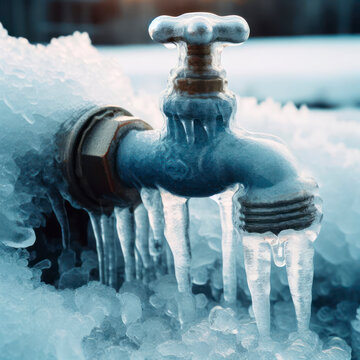Critical Strategies for Preventing Frozen Plumbing in Cold Weather
Critical Strategies for Preventing Frozen Plumbing in Cold Weather
Blog Article
Just how do you feel with regards to 6 Ways to Prevent Frozen Pipes?

Winter can damage your pipes, especially by freezing pipes. Below's how to stop it from taking place and what to do if it does.
Introduction
As temperature levels drop, the threat of icy pipelines increases, possibly leading to pricey repair services and water damages. Comprehending exactly how to stop icy pipelines is critical for house owners in chilly climates.
Avoidance Tips
Shielding vulnerable pipes
Cover pipelines in insulation sleeves or make use of warm tape to shield them from freezing temperature levels. Focus on pipelines in unheated or exterior locations of the home.
Heating methods
Maintain interior spaces properly warmed, specifically locations with pipes. Open cupboard doors to enable warm air to distribute around pipelines under sinks.
Just how to determine frozen pipelines
Search for decreased water flow from faucets, unusual smells or sounds from pipelines, and noticeable frost on subjected pipes.
Long-Term Solutions
Structural modifications
Take into consideration rerouting pipelines away from exterior walls or unheated areas. Include additional insulation to attic rooms, cellars, and crawl spaces.
Upgrading insulation
Invest in top notch insulation for pipes, attics, and walls. Appropriate insulation aids keep consistent temperatures and lowers the danger of frozen pipelines.
Safeguarding Outdoor Pipes
Yard tubes and outdoor faucets
Detach and drain pipes garden tubes before winter season. Mount frost-proof spigots or cover outdoor taps with insulated caps.
Understanding Frozen Pipelines
What causes pipelines to ice up?
Pipelines ice up when subjected to temperatures listed below 32 ° F (0 ° C) for expanded periods. As water inside the pipes ices up, it broadens, taxing the pipeline wall surfaces and potentially triggering them to burst.
Risks and problems
Frozen pipes can bring about water system disruptions, home damages, and expensive repair services. Ruptured pipes can flood homes and cause considerable architectural damages.
Signs of Frozen Water Lines
Identifying frozen pipes early can prevent them from bursting.
What to Do If Your Pipelines Freeze
Immediate activities to take
If you suspect frozen pipelines, maintain faucets open to alleviate pressure as the ice thaws. Make use of a hairdryer or towels taken in hot water to thaw pipelines gradually.
Final thought
Protecting against icy pipes requires positive measures and fast responses. By comprehending the causes, signs, and preventive measures, home owners can safeguard their pipes throughout winter.
5 Ways to Prevent Frozen Pipes
Drain Outdoor Faucets and Disconnect Hoses
First, close the shut-off valve that controls the flow of water in the pipe to your outdoor faucet. Then, head outside to disconnect and drain your hose and open the outdoor faucet to allow the water to completely drain out of the line. Turn off the faucet when done. Finally, head back to the shut-off valve and drain the remaining water inside the pipe into a bucket or container. Additionally, if you have a home irrigation system, you should consider hiring an expert to clear the system of water each year.
Insulate Pipes
One of the best and most cost-effective methods for preventing frozen water pipes is to wrap your pipes with insulation. This is especially important for areas in your home that aren’t exposed to heat, such as an attic. We suggest using foam sleeves, which can typically be found at your local hardware store.
Keep Heat Running at 65
Your pipes are located inside your walls, and the temperature there is much colder than the rest of the house. To prevent your pipes from freezing, The Insurance Information Institute suggests that you keep your home heated to at least 65 degrees, even when traveling. You may want to invest in smart devices that can keep an eye on the temperature in your home while you’re away.
Leave Water Dripping
Moving water — even a small trickle — can prevent ice from forming inside your pipes. When freezing temps are imminent, start a drip of water from all faucets that serve exposed pipes. Leaving a few faucets running will also help relieve pressure inside the pipes and help prevent a rupture if the water inside freezes.
Open Cupboard Doors
Warm your kitchen and bathroom pipes by opening cupboards and vanities. You should also leave your interior doors ajar to help warm air circulate evenly throughout your home.

I am just very occupied with Winter Plumbing Precautions: Preventing Frozen Pipes and I am assuming you enjoyed the new piece. Liked our blog? Please quickly share it. Let other people discover it. Thanks for being here. Don't forget to visit our website back soon.
Estimating Report this page